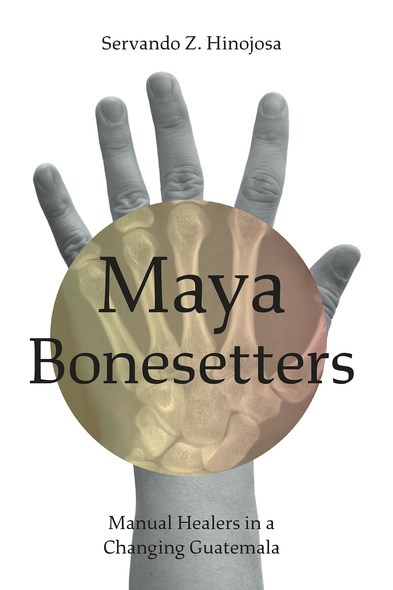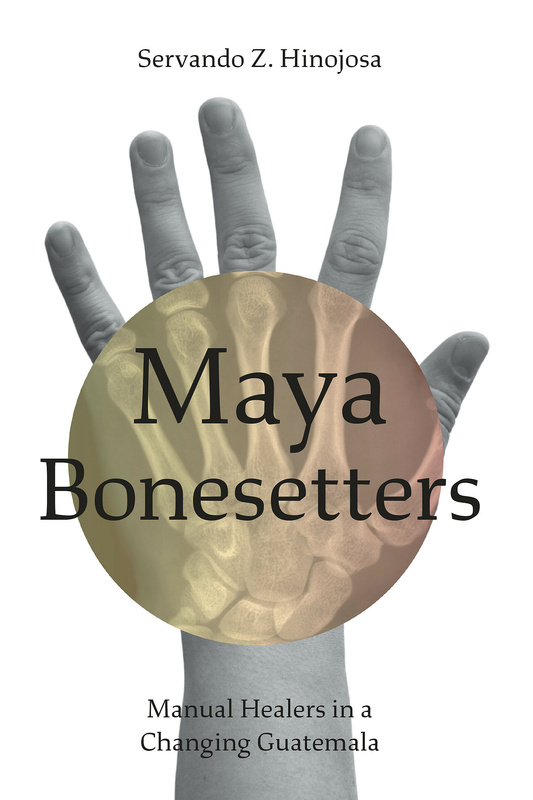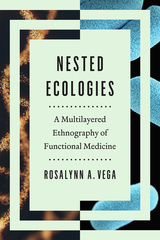
Maya Bonesetters
Manual Healers in a Changing Guatemala
Scholarship on Maya healing traditions has focused primarily on the roles of midwives, shamans, herbalists, and diviners. Bonesetters, on the other hand, have been largely excluded from conversations about traditional health practitioners and community health resources. Maya Bonesetters is the first book-length study of bonesetting in Guatemala and situates the manual healing tradition within the current cultural context—one in which a changing medical landscape potentially threatens bonesetters’ work yet presents an opportunity to strengthen its relevance.
Drawing on extensive field research in highland Guatemala, Servando Z. Hinojosa introduces readers to a seldom documented, though nonetheless widespread, variety of healer. This book examines the work of Kaqchikel and Tz’utujiil Maya bonesetters, analyzes how they diagnose and treat injuries, and contrasts the empirical and sacred approaches of various healers. Hinojosa shows how bonesetters are carefully adapting certain biomedical technologies to meet local expectations for care and concludes that, despite pressures and criticisms from the biomedical community, bonesetting remains culturally meaningful and vital to Maya people, even if its future remains uncertain.
[A] well-written, well-researched ethnograpy of bonesetting among Guatemalan Maya…Recommended.
[Maya Bonesetters] is an important document of an often overlooked Indigenous healing practice that will be of interest to scholars and students of medical anthropology, Mesoamerica, and anyone with an interest in contemporary health care challenges in Latin America.
[Maya Bonesetters] adds rich detail to our understanding of the accommodations that Indigenous healers often make to the challenge of biomedicine, how they will accept and integrate into their practice new ideas, new terminology, new medicines, and even new technology...This is a strong work presenting ideas about the contemporary context of Indigenous medicine that approaches the topic from the angle of empiricism and pragmatism. As a contribution to the anthropology of healing it is invaluable. Scholars of the Maya will find great value here as Hinojosa takes the reader into the villages and therapeutic spaces of pain and suffering that are relatively undocumented.
Maya Bonesetters should appeal to anthropologists and those in the disciplines of natural medicine, indigenous healers like curanderas, and individuals with traditional healing in their ancestral memories...This is a fascinating book for use by anthropologists focused on the Americas, and is a resource for those in other disciplines, sociology, psychology, with an interest in natural healing and its connection to social and mental health...Without a doubt, this is a highly absorbing book.
The most important contribution of this book is its focus on a healing tradition that has not received the academic attention it deserves...In his convincing discussion of the injustice of this omission, Hinojosa restores the bonesetters to a valued position in Mesoamerican ethnology and medical anthropology in general...this study represents an advance in recognition of indigenous healing knowledge and techniques. As indigenous knowledge is increasingly valued, the bonesetters and their skills in diagnosing injuries, massaging muscles and restoring movement will be more widely accepted, not only in Guatemala but around the world. This book is more than a first approximation to this healing tradition and the changes it is facing in its coexistence with biomedicine; it is also a tribute to this important area of humanity’s knowledge.
This book shows why bonesetters are important in the health care landscape of Guatemala and beyond. It is appropriate for undergraduate and graduate courses in anthropology and Latin American studies, particularly courses focusing on the Maya or traditional healing. The writing is very accessible, with theories and concepts presented free of academic jargon.
Servando Z. Hinojosa is a professor of anthropology at the University of Texas Rio Grande Valley. He is the author of In This Body: Kaqchikel Maya and the Grounding of Spirit and coeditor of Healing by Hand: Manual Medicine and Bonesetting in Global Perspective. Servando G. Hinojosa is a retired educator and an active sculptor, muralist, and illustrator.
Introduction
Chapter 1. Bonesetting over Time
Chapter 2. Empirical Forms of Maya Bonesetting
Chapter 3. Sacred Forms of Maya Bonesetting
Chapter 4. Challenges and Changes in the Injury Landscape
Conclusion
Appendix. Traditional Medicine and Bonesetting: Integration and Lessons
Notes
References
Index







